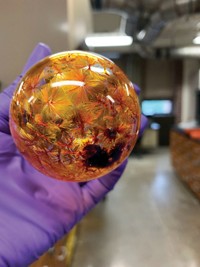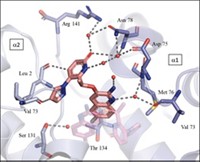Advertisement
Grab your lab coat. Let's get started
Welcome!
Welcome!
Create an account below to get 6 C&EN articles per month, receive newsletters and more - all free.
It seems this is your first time logging in online. Please enter the following information to continue.
As an ACS member you automatically get access to this site. All we need is few more details to create your reading experience.
Not you? Sign in with a different account.
Not you? Sign in with a different account.
ERROR 1
ERROR 1
ERROR 2
ERROR 2
ERROR 2
ERROR 2
ERROR 2
Password and Confirm password must match.
If you have an ACS member number, please enter it here so we can link this account to your membership. (optional)
ERROR 2
ACS values your privacy. By submitting your information, you are gaining access to C&EN and subscribing to our weekly newsletter. We use the information you provide to make your reading experience better, and we will never sell your data to third party members.
Biological Chemistry
Zebrafish Screen Finds Transplant-Boosting Compound
Medicine: New screen uses fluorescence-tagged blood cell transplants to visualize transplant success in transparent zebrafish
August 3, 2015
| A version of this story appeared in
Volume 93, Issue 31
Because blood stem cell transplants require chemotherapy that knocks out a patient’s immune system, the procedures can be dangerous. Now, researchers at Boston Children’s Hospital have developed a new screening method using zebrafish to find small molecules that can improve the speed and efficiency at which these transplants engraft, or “take,” to their host (Nature 2015, DOI: 10.1038/nature14569). The group, led by Pulin Li, Jamie L. Lahvic, and Vera Binder in Leonard I. Zon’s laboratory, created two kinds of donor fish. They tagged one fish’s blood cells with DsRed-Express florescent protein (DsRed2) and the other fish’s blood cells with green fluorescent protein (GFP). After treating the GFP-labeled fish tissue with a compound of interest, they transplanted equal amounts of kidney marrow from both fish into a third transparent fish. The ratio of cells expressing GFP versus DsRed2 allows observers to determine visually if the compound of interest gave engraftment an edge. The researchers screened 480 compounds. Among the hits was 11,12-epoxyeicosatrienoic acid, which also aided engraftment in mice.





Join the conversation
Contact the reporter
Submit a Letter to the Editor for publication
Engage with us on Twitter